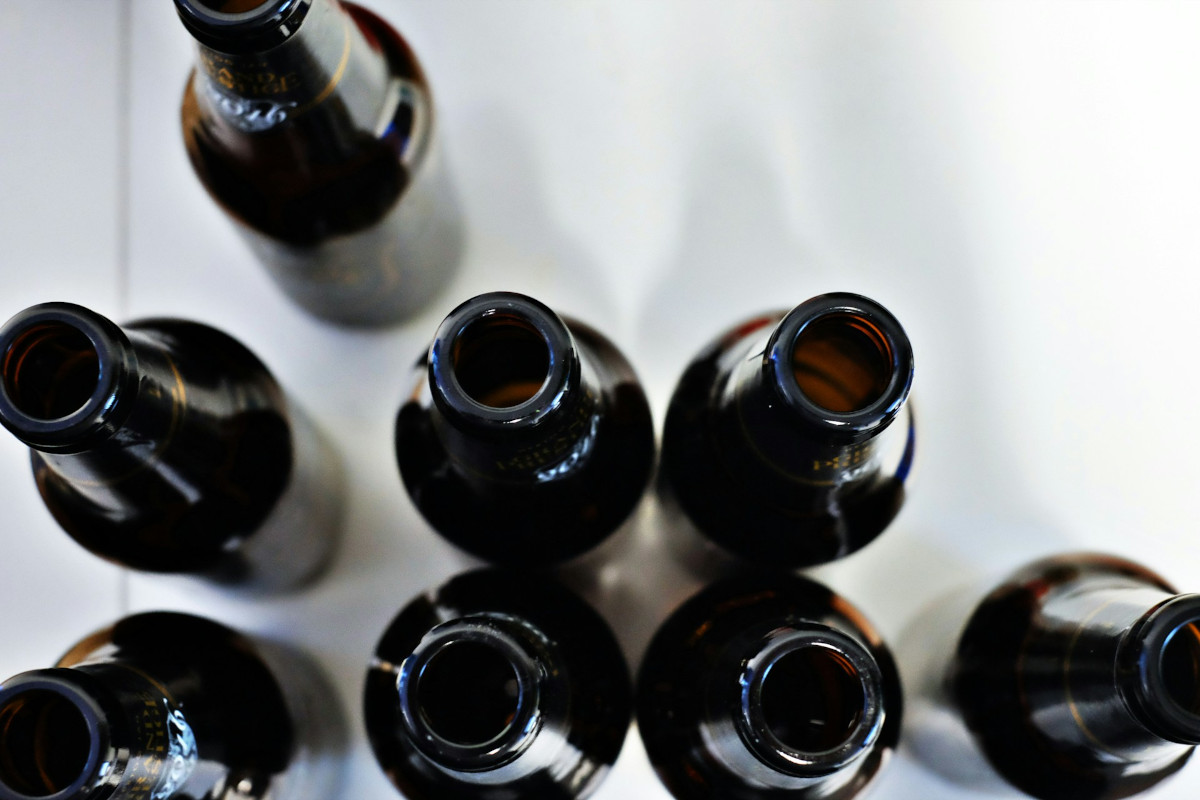
What Is Alcohol Use Disorder?
Alcohol Use Disorder (AUD) is a diagnosable medical condition marked by a harmful drinking pattern, loss of control, and adverse effects on health, relationships, and careers. Rooted in genetic, psychological, and environmental factors, AUD often intertwines with mental health issues like anxiety and depression. Treatment involves detox, therapy, medications, and addressing co-occurring conditions. Prevention through education and early intervention is vital to combatting its global impact.
Table of Contents:
Understanding Alcohol Use Disorder
A Definition Beyond Drinking
Alcohol use disorder encompasses more than heavy drinking or the occasional overindulgence. It is a diagnosable medical condition recognized by the Diagnostic and Statistical Manual of Mental Disorders, Fifth Edition (DSM-5), in mild, moderate, and severe forms.
AUD is characterized by a harmful pattern of drinking that leads to physical dependency, emotional turmoil, and social consequences [1]. At its core, AUD reflects a loss of control: the individual continues drinking despite clear adverse effects. The psychological effects of alcohol exacerbate issues like anxiety and depression, creating a damaging cycle where alcohol abuse and mental health are deeply intertwined. Cravings become so intense they overpower rational decision-making, often leading to health deterioration, strained relationships, and disrupted careers.

Why It Matters
Alcohol-related harm is more than a personal burden; it’s a global crisis. According to the World Health Organization (WHO), alcohol contributes to nearly 3 million deaths annually, accounting for around 5% of all global deaths [2]. Its influence spans continents, with culturally specific drinking norms sometimes masking the gravity of dependency. Whether it is a high-functioning professional masking addiction or a struggling individual who is visibly impacted, AUD does not discriminate by class, gender, or geography.
Alcohol Detox
Alcohol detox is the first and most important step of someone's addiction recovery journey. Our custom, medically-managed treatment program can help you overcome addiction and equip you with the tools you need to take back control of your life for good.
Book NowCauses and Risk Factors
Unpacking the roots of AUD reveals a labyrinth of interconnected influences, from genetic predispositions to cultural elements that subtly encourage overconsumption. To understand why some individuals develop this disorder while others do not, it is essential to explore the biological, psychological, environmental, and societal factors that converge to create a perfect storm for dependency.
The Genetic Blueprint: A Predisposition Written in DNA
The role of genetics in AUD is profound, with scientific studies suggesting that genetic factors account for up to 50% of the risk for developing alcohol dependence. While no single “alcoholism gene” has been identified, variations in specific genes related to alcohol metabolism significantly influence susceptibility.
Variants in ADH1B and ALDH2 Genes
These genes control how the body breaks down alcohol. For example, certain variants may result in slower alcohol metabolism, leading to unpleasant reactions like flushing or nausea, which can act as a natural deterrent. Conversely, other genetic profiles may encourage rapid processing of alcohol, making drinking more tolerable and increasing the risk of overuse [3].
Family History
Individuals with a family history of alcoholism face a heightened risk, often due to a dual influence of inherited traits and environmental factors. Growing up in an environment where alcohol use is normalized can reinforce unhealthy patterns and normalize dependency from an early age [4].
Beyond metabolism, genetic predispositions can influence temperament, decision-making, and how the brain responds to stress. These traits often shape a person’s relationship with alcohol long before they take their first sip.
Psychological Underpinnings: When the Mind and Alcohol Collide
The intricate relationship between mental health and alcoholism is a classic case of the chicken and the egg. Does poor mental health lead to drinking, or does drinking damage mental health? In most cases, the answer is both.
Alcohol Abuse and Depression
For individuals grappling with depression, alcohol often masquerades as an emotional anesthetic. The temporary numbing effect may provide relief from sadness or hopelessness, but it exacerbates symptoms over time. Alcohol’s depressant qualities disrupt the brain’s ability to regulate mood, leaving individuals trapped in a cycle of drinking to escape depression that alcohol only worsens [5].
Alcohol Abuse and Anxiety
Anxiety is another major driver of alcohol misuse, as the connection between alcohol and anxiety is both immediate and insidious. While alcohol may initially soothe nervous tension or reduce social inhibitions, long-term use intensifies anxiety, creating a cruel paradox. Chronic drinkers often find themselves drinking more in order to stave off the very symptoms alcohol exacerbates, particularly in cases of generalized anxiety or panic disorders [6].
Alcohol Abuse and Bipolar Disorder
The relationship between bipolar disorder and alcohol is especially intricate. During manic phases, individuals may indulge in excessive drinking to amplify their euphoria or chase the thrill of disinhibition. Conversely, depressive episodes often see alcohol as a refuge from despair. This cyclical relationship compounds the severity of both conditions, demanding careful and integrated treatment approaches [7].
Psychological vulnerabilities can make alcohol particularly attractive, and they can also diminish the ability to recognize and resist its dangers. Stress, trauma, and co-occurring disorders intertwine, making it essential to address alcohol use and mental health simultaneously.
Environmental Influences: The Impact of Upbringing and Circumstance
Environmental factors play a formative role in shaping an individual’s relationship with alcohol. Childhood experiences, social settings, and life circumstances can either shield a person from dependency or push them toward it [8][9].
Childhood Trauma
Adverse childhood experiences (ACEs)—such as neglect, abuse, or growing up in a home where substance abuse was prevalent, lay a foundation for future alcohol misuse. For many, alcohol becomes a crutch to suppress unresolved emotional pain or fill the void left by a lack of nurturing.
Peer Pressure and Social Settings
Adolescents and young adults, especially those navigating environments where heavy drinking is normalized, face heightened risk. Many college campuses, for instance, often glorify excessive alcohol consumption, creating a culture where abstinence is stigmatized and dependency is overlooked. In certain professions such as the high-stress worlds of law, medicine, or hospitality, alcohol is frequently used as a stress reliever or bonding tool, blurring the line between recreational use and harmful habits.
Accessibility and Availability
In communities where alcohol is cheap and readily available, individuals may be more likely to develop unhealthy drinking patterns.
The Glamorization of Alcohol
Advertising and media can portray alcohol as a cornerstone of celebration, success, and sophistication. Commercials often depict alcohol as the entryway to a more exciting life, a way to unwind after a hard day, or an essential ingredient for social acceptance. Such messaging obscures the risks and fuels a culture where drinking is perceived as harmless—or even necessary—for a fulfilling life.
Binge Drinking as a Rite of Passage
In many societies, heavy drinking is seen as a milestone of adulthood or a badge of resilience. From fraternity hazing rituals to weekend pub crawls, binge drinking is often normalized in ways that trivialize its dangers.
Cultural Practices
In some cultures, alcohol is deeply intertwined with tradition and daily life. While this can foster moderation in some cases, it can also make abstinence or seeking help socially a unique challenge. For instance, in settings where refusing a drink is seen as an affront to hospitality, individuals struggling with AUD may face stigma or isolation.
These societal norms influence individual behavior, and they create environments where harmful patterns thrive. Efforts to address AUD must therefore tackle these cultural undercurrents alongside individual treatment.
Symptoms and Diagnosis
Identifying AUD involves recognizing a constellation of symptoms that span physical, emotional, and behavioral dimensions [12].
Physical Markers
Chronic alcohol use takes a severe toll on the body. Liver damage, ranging from fatty liver to cirrhosis, is among the most well-known consequences. Additionally, heavy drinkers may experience weakened immune systems, cardiovascular issues, and neurological complications such as memory impairment.
Behavioral Patterns
Behavioral symptoms often provide the first clues to AUD. Increased tolerance, needing more alcohol to achieve the same effect, is a hallmark. Other signs include neglecting responsibilities, persistent drinking despite negative outcomes, and withdrawal from loved ones.

Emotional and Psychological Effects
The emotional effects of alcohol are both acute and long-term. While it initially lowers inhibitions and produces feelings of relaxation, chronic use fosters irritability, mood swings, and emotional instability. Over time, alcohol’s depressive effects take hold, deepening conditions like anxiety and depression.
The DSM-5 Criteria
The DSM-5 provides an essential framework for diagnosing AUD, with 11 criteria covering aspects such as:
- Inability to limit consumption.
- Persistent desire or failed attempts to quit.
- Sacrificing social, occupational, or recreational activities for alcohol.
The number of criteria met determines the disorder’s severity, with two to three indicating mild AUD, four to five moderate, and six or more severe [1].
The Ripple Effects of Alcohol Use Disorder
The impact of AUD reverberates across multiple domains, from personal health to societal costs.
Physical Toll
Alcohol wreaks havoc on nearly every organ. Beyond liver damage, it contributes to heart disease, pancreatitis, gastrointestinal issues, and various cancers. Over time, chronic drinking accelerates aging and diminishes overall quality of life.
Mental Health Consequences
The relationship between alcohol use and mental health is deeply intertwined. Prolonged drinking alters brain chemistry, disrupting neurotransmitters like serotonin and dopamine. These changes heighten vulnerability to mental illnesses, including depression, anxiety, and bipolar disorder.
For many, alcohol serves as a coping mechanism for anxiety, providing fleeting relief at a heavy cost. The emotional highs and lows associated with bipolar disorder and alcohol abuse illustrate how drinking exacerbates instability, fueling a dangerous cycle.
Social and Economic Costs
AUD can fracture relationships, leading to estrangement, divorce, and diminished parenting capacity. Economically, its toll is staggering: from lost workplace productivity to healthcare expenses. The broader societal impact, including accidents and alcohol-fueled violence, underscores its far-reaching consequences.
Treatment and Management
Recovering from AUD is neither simple nor linear, but it is possible with a comprehensive, multifaceted approach [12].
Detoxification
The first step in recovery is detoxification, a medically supervised process to manage withdrawal symptoms such as tremors, seizures, or delirium tremens. This is a critical phase that lays the groundwork for sustained treatment.
Therapeutic Interventions
Cognitive Behavioral Therapy (CBT): CBT identifies thought patterns that drive drinking, replacing them with healthier coping strategies. This evidence-based approach helps individuals build resilience and self-awareness.
Support Groups: Peer-driven groups like Alcoholics Anonymous (AA) offer a sense of belonging and accountability. The 12-step model, emphasizing personal responsibility and community, has helped millions achieve sobriety.

Medications
Certain FDA-approved medications, such as Naltrexone, reduce the rewarding effects of alcohol, while Acamprosate helps restore brain chemistry disrupted by prolonged drinking. These medications, combined with therapy, increase the chances of long-term recovery.
Addressing Dual Diagnosis
Integrated treatment addressing both AUD and co-occurring mental health conditions is essential. For example, addressing alcohol use and anxiety concurrently ensures neither condition undermines the other’s treatment.
Prevention and Early Intervention
Efforts to prevent AUD are most successful when applied as early as possible and with a multi-faceted approach.
Screening and Awareness
Routine screening during medical visits can identify risky drinking patterns before they escalate. Tools like the Alcohol Use Disorders Identification Test (AUDIT) provide a simple yet effective means of assessment [13].
Community and Educational Programs
Public education campaigns, workplace wellness programs, and school-based interventions play vital roles in prevention. By fostering a culture of moderation and awareness, communities can reduce the stigma and risks associated with drinking.
Challenges in Addressing AUD
Despite the progress in understanding and treating AUD, significant barriers remain [14].
Stigma and Misconceptions
AUD is often misunderstood as a moral failing rather than a medical condition, deterring individuals from seeking help. Challenging this stigma through education and empathetic communication is crucial.
Relapse and Long-Term Recovery
Relapse is a common part of the recovery process for many. Developing robust relapse prevention strategies, including stress management and support networks, is key.
Accessibility
Not everyone has access to quality treatment due to costs, geographic limitations, or lack of local resources. Expanding affordable and telehealth options can be helpful for bridging these gaps.
Conclusion
Alcohol use disorder is a pervasive, multifaceted condition that extends its shadow over individuals, families, and societies. Its causes are rooted in genetic predispositions, psychological vulnerabilities, and societal norms, while its effects span physical health, mental well-being, and economic stability.
Treatment, though challenging, is within reach. By addressing both the disorder and its underlying causes through therapy, medication, and support systems, individuals can reclaim their lives. Prevention, rooted in education and early intervention, holds the promise of reducing AUD’s burden for future generations.
Alcohol Detox Program
If you or someone you love are struggling with alcohol use, getting professional help is essential for safe and successful detox and recovery.
Our medically-managed detox and recovery program is tailored to your needs to help you overcome withdrawal symptoms and achieve lasting sobriety. One of our medical professionals will bring your appointments directly to your home , offering unparalleled privacy and discretion.
Book an appointment by clicking the button below.
Book NowReferences
- Grant, Bridget F., Risë B. Goldstein, Tulshi D. Saha, S. Patricia Chou, Jeesun Jung, Haitao Zhang, Roger P. Pickering, et al. 2015. “Epidemiology of DSM-5 Alcohol Use Disorder.” JAMA Psychiatry 72 (8): 757.
- World Health Organization: WHO. 2024. “Over 3 million annual deaths due to alcohol and drug use, majority among men.” World Health Organization. June 25, 2024.
- Yoshimasu, Kouichi, Kanae Mure, Marowa Hashimoto, Shigeki Takemura, Kanami Tsuno, Mariko Hayashida, Kenji Kinoshita, Tatsuya Takeshita, and Kazuhisa Miyashita. 2014. “Genetic alcohol sensitivity regulated by ALDH2 and ADH1B polymorphisms is strongly associated with depression and anxiety in Japanese employees.” Drug and Alcohol Dependence 147 (December): 130–36.
- Chartier KG, Bares CB, Prom-Wormley EC, et al. Effects of family history of alcohol problems on alcohol consumption: Stronger for medically underserved men. Prev Med. 2022;161:107093.
- McHugh, R. 2019. “Alcohol Use Disorder and Depressive Disorders.” Alcohol Research 40 (1).
- Anker, Justin. 2019. “Co-Occurring Alcohol Use Disorder and Anxiety: Bridging the Psychiatric, Psychological, and Neurobiological Perspectives.” Alcohol Research 40 (1).
- Farren, Conor K., Kevin P. Hill, and Roger D. Weiss. 2012. “Bipolar Disorder and Alcohol Use Disorder: A Review.” Current Psychiatry Reports 14 (6): 659–66.
- Chartier, Karen G., Katherine J. Karriker‐Jaffe, Cory R. Cummings, and Kenneth S. Kendler. 2017. “Review: Environmental influences on alcohol use: Informing research on the joint effects of genes and the environment in diverse U.S. populations.” American Journal on Addictions 26 (5): 446–60.
- Hughes, Karen, Zara Quigg, Lindsay Eckley, Mark Bellis, Lisa Jones, Amador Calafat, Matej Kosir, and Ninette Van Hasselt. 2011. “Environmental factors in drinking venues and alcohol‐related harm: the evidence base for European intervention.” Addiction 106 (s1): 37–46.
- Sudhinaraset, May, Christina Wigglesworth, and David T Takeuchi. 2016. “Social and Cultural Contexts of Alcohol Use: Influences in a Social–Ecological Framework.” Alcohol Res. 2016.
- Castro, Felipe Gonzalez, Manuel Barrera, Laura A. Mena, and Katherine M. Aguirre. 2014. “Culture and Alcohol Use: Historical and Sociocultural Themes From 75 Years of Alcohol Research.” Journal of Studies on Alcohol and Drugs Supplement, no. s17 (March): 36–49.
- Nehring, Sara M., Richard J. Chen, and Andrew M. Freeman. 2024. “Alcohol Use Disorder.” StatPearls – NCBI Bookshelf. March 16, 2024.
- Lundin, Andreas, Mats Hallgren, Natalja Balliu, and Yvonne Forsell. 2015. “The Use of Alcohol Use Disorders Identification Test (AUDIT) in Detecting Alcohol Use Disorder and Risk Drinking in the General Population: Validation of AUDIT Using Schedules for Clinical Assessment in Neuropsychiatry.” Alcoholism Clinical and Experimental Research 39 (1): 158–65.
- Lékó, András H., and Lorenzo Leggio. 2024. “Barriers to Alcohol Use Disorder Treatment in Patients with Alcohol-Associated Liver Disease.” Clinics in Liver Disease 28 (4): 779–91.


